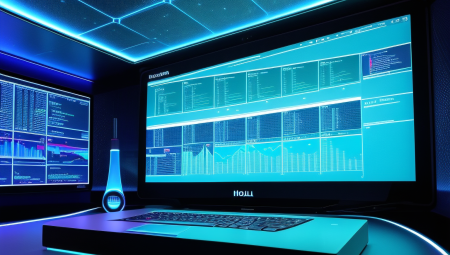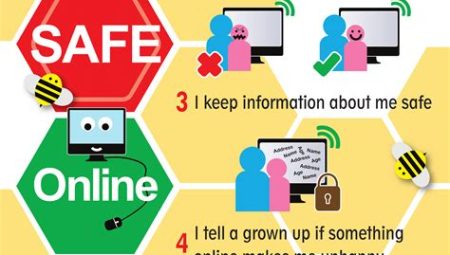In recent years, the healthcare industry has witnessed a significant transformation through the integration of advanced health technologies. From digital health tools to artificial intelligence and wearable devices, these innovations have revolutionized healthcare delivery and patient care. In this blog post, we will explore the various ways in which these technologies are reshaping the healthcare landscape.
We will delve into the use of digital health tools for remote monitoring and how mobile apps are enhancing patient engagement. Additionally, we will discuss the role of artificial intelligence in diagnostics and treatment, the impact of wearable devices on healthcare, and the benefits of telemedicine in improving access to care. Furthermore, we will examine the use of blockchain technology for secure health data exchange, the advancements in precision medicine and genomic technologies, and the increasing popularity of robotic surgery and minimally invasive procedures. Lastly, we will explore the use of virtual reality for pain management and the Internet of Medical Things (IoMT) for healthcare efficiency. Stay tuned as we unravel the incredible potential of these advanced health technologies.
Table of Contents
Digital Health Tools for Remote Monitoring
Digital health tools for remote monitoring have revolutionized the way patients and healthcare providers interact. With the advancement of technology, patients can now track their health data from the comfort of their homes. This has led to improved efficiency in healthcare delivery and better patient outcomes.
One of the key benefits of remote monitoring tools is that they enable continuous tracking of vital signs and other health parameters. This is particularly useful for patients with chronic conditions such as diabetes or hypertension. By transmitting real-time data to healthcare providers, remote monitoring tools allow for early intervention and personalized treatment plans.
Moreover, these tools also enhance patient engagement by giving individuals more control over their health. Patients can easily access their health data through mobile apps and use this information to make informed decisions about their lifestyle and treatment regimens. This empowerment has been shown to improve adherence to medication and other therapeutic measures.
Overall, digital health tools for remote monitoring have the potential to transform healthcare delivery by promoting proactive and personalized care. As technology continues to evolve, we can expect these tools to become even more integrated into routine clinical practice, ultimately leading to better health outcomes for patients.
Enhancing Patient Engagement through Mobile Apps
In today’s healthcare landscape, patient engagement is more important than ever. With the rise of mobile technology, healthcare providers have the opportunity to enhance patient engagement through the use of mobile apps. These apps can provide patients with access to their medical records, appointment scheduling, medication reminders, and educational resources, all in the palm of their hands.
By using mobile apps, healthcare providers can empower patients to take control of their own healthcare journey. Patients can track their progress, communicate with their care team, and access personalized health information, leading to greater patient satisfaction and improved health outcomes.
Furthermore, mobile apps can support patient engagement by offering features such as secure messaging, telehealth consultations, and health goal tracking. This seamless access to care and support can help patients feel more connected to their healthcare providers and more motivated to actively participate in their own health management.
Overall, mobile apps have the potential to revolutionize patient engagement in healthcare by providing patients with the tools and resources they need to be more informed, proactive, and engaged in their own care.
Artificial Intelligence in Diagnostics and Treatment
Artificial intelligence (AI) has revolutionized the way diagnostics and treatment are approached in the healthcare industry. With the ability to process large volumes of data at incredible speeds, AI has made significant strides in accurately diagnosing various medical conditions. Through machine learning algorithms, AI can analyze images, genetic data, and patient records to identify patterns and make predictions that can assist healthcare professionals in providing more precise diagnoses.
Furthermore, the use of AI in treatment planning has opened up a new realm of possibilities. By analyzing vast amounts of patient data and medical literature, AI systems can suggest personalized treatment plans that are tailored to the specific needs of each individual. This not only enhances the efficiency of healthcare delivery but also improves patient outcomes by ensuring that the treatments are more targeted and effective.
One of the most notable applications of AI in diagnostics and treatment is in the field of radiology. AI-powered algorithms can interpret medical images such as X-rays, MRIs, and CT scans with a level of accuracy that rivals that of experienced radiologists. This not only speeds up the interpretation process but also reduces the likelihood of human error, leading to more reliable diagnoses.
As AI continues to advance, its role in diagnostics and treatment is only expected to grow. With the potential to uncover new insights from complex medical data and assist healthcare professionals in making more informed decisions, AI is poised to continue transforming the way healthcare is delivered.
The Role of Wearable Devices in Healthcare
Wearable devices have revolutionized the way healthcare is delivered and managed. From fitness trackers to smartwatches, wearable devices are now being used to monitor vital signs, track physical activity, and even provide real-time feedback to users. These devices play a crucial role in preventive healthcare, allowing individuals to take control of their own health and make informed decisions about their lifestyle.
One of the key benefits of wearable devices is their ability to provide continuous monitoring, which can be especially useful for patients with chronic conditions such as diabetes or heart disease. The data collected by these devices can be used by healthcare professionals to track patient progress, adjust treatment plans, and even intervene in emergency situations. This has the potential to improve patient outcomes and reduce healthcare costs in the long run.
Furthermore, wearable devices are also being integrated into telemedicine and remote patient monitoring programs, allowing healthcare providers to keep track of their patients’ health outside of traditional clinical settings. This not only improves access to care for patients in remote or underserved areas but also allows for early detection of potential health issues, leading to timely intervention and better management of chronic conditions.
In conclusion, wearable devices are playing an increasingly important role in modern healthcare, from empowering individuals to take charge of their own health to revolutionizing remote patient monitoring and telemedicine. As technology continues to advance, we can expect these devices to become even more sophisticated and integrated into the healthcare system, ultimately leading to better health outcomes for individuals and populations as a whole.
Improving Access to Care with Telemedicine
Telemedicine is revolutionizing the way healthcare is delivered, making it more accessible for patients who may have difficulty accessing traditional in-person care. With the use of telemedicine platforms, patients can consult with healthcare professionals remotely, eliminating the need for travel and reducing the barriers to accessing timely medical care.
By leveraging telemedicine technologies, healthcare providers can reach patients in remote or underserved areas, allowing them to receive the care they need without having to travel long distances. This is especially beneficial for patients with chronic conditions who require regular check-ups and monitoring.
Furthermore, telemedicine can also improve access to specialty care, as patients can connect with specialists located in distant locations without the need for referrals or lengthy wait times. This is particularly important for individuals living in rural areas, where specialty care may be limited.
Overall, telemedicine is playing a crucial role in improving access to care for patients, regardless of their location or physical limitations, contributing to better health outcomes and overall patient satisfaction.
Blockchain Technology for Secure Health Data Exchange
Blockchain technology is revolutionizing the healthcare industry by providing a secure and efficient way to exchange patient data. With the increasing need for secure data exchange, blockchain technology offers a decentralized and transparent system that ensures the integrity and privacy of healthcare information. By using blockchain technology, healthcare organizations can securely store and share patient records and other sensitive data, while ensuring that only authorized personnel have access to the information.
One of the key advantages of using blockchain technology for health data exchange is its ability to create an immutable and tamper-proof record of every transaction. This means that once data is added to the blockchain, it cannot be altered or deleted, providing a high level of data integrity and security. This is particularly important in the healthcare industry, where patient data must be protected from unauthorized access and potential cyber threats.
Furthermore, blockchain technology can streamline the process of sharing patient data among different healthcare providers, improving the overall efficiency of the healthcare system. This can lead to better coordination of care, faster diagnosis, and ultimately improved patient outcomes. By leveraging the secure and transparent nature of blockchain technology, healthcare organizations can enhance the quality of care they provide to their patients.
In conclusion, blockchain technology has the potential to transform the way healthcare data is exchanged, offering a secure and efficient solution to the challenges faced by the industry. With its ability to ensure data integrity, provide secure access to patient information, and streamline the sharing of data among healthcare providers, blockchain technology is poised to play a key role in the future of healthcare. As the technology continues to evolve, we can expect to see even greater improvements in data security and patient care.
Precision Medicine and Genomic Technologies
Precision medicine, also known as personalized medicine, is a medical approach that takes into account individual differences in people’s genes, environments, and lifestyles. It allows doctors to tailor treatment and prevention strategies to the unique characteristics of each patient. Genomic technologies play a crucial role in precision medicine by analyzing a person’s genetic makeup to understand how their unique combination of genes affects their response to medications, susceptibility to diseases, and overall health.
One of the key benefits of precision medicine and genomic technologies is the ability to identify individuals who are at risk for certain diseases and develop personalized prevention strategies. Instead of a one-size-fits-all approach, these technologies enable healthcare providers to offer targeted interventions that are more effective and have fewer side effects. For example, instead of prescribing a standard dose of a medication, doctors can use genetic testing to determine the most appropriate dosage based on an individual’s genetic makeup, increasing the likelihood of a positive treatment outcome.
Furthermore, precision medicine and genomic technologies have the potential to revolutionize the diagnosis and treatment of cancer. By analyzing the genetic characteristics of a tumor, doctors can identify specific mutations that drive the growth of cancer cells and tailor treatment plans to target those mutations. This approach, known as precision oncology, holds promise for improving cancer treatment outcomes and reducing the burden of traditional chemotherapy and radiation therapy on patients’ bodies.
In summary, precision medicine and genomic technologies are transforming the healthcare landscape by enabling tailored medical interventions that take into account individual genetic variations. These advancements have the potential to improve patient outcomes, reduce healthcare costs, and pave the way for a more personalized approach to healthcare.
Robotic Surgery and Minimally Invasive Procedures
Robotic surgery and minimally invasive procedures have revolutionized the field of healthcare by offering patients less invasive options for surgical treatment. Robotic surgery involves the use of robotic systems to perform surgical procedures with precision and accuracy, while minimally invasive procedures use small incisions to access the surgical site, resulting in less trauma to the body and quicker recovery times.
These advancements in medical technology have allowed for greater precision and control during surgical procedures, leading to improved patient outcomes and reduced risks of complications. Robotic surgery systems are equipped with advanced imaging technology that provides surgeons with a detailed view of the surgical site, allowing for more precise movements and reducing the risk of damage to surrounding tissues.
Similarly, minimally invasive procedures offer patients a less invasive alternative to traditional open surgery, resulting in smaller scars, decreased pain, and shorter recovery times. These procedures are often performed using specialized surgical instruments and cameras that allow surgeons to visualize and perform the surgery through small incisions.
In conclusion, the advancements in robotic surgery and minimally invasive procedures have significantly improved the surgical options available to patients, offering greater precision, reduced recovery times, and improved outcomes. These innovative technologies continue to shape the future of healthcare, providing patients with safer and more effective treatment options.
Using Virtual Reality for Pain Management
Virtual reality (VR) is a cutting-edge technology that is being harnessed to revolutionize the field of pain management. By immersing patients in a realistic and interactive virtual environment, VR has the potential to distract them from their pain and provide a non-pharmaceutical alternative for pain relief.
Research has shown that the use of VR in pain management can significantly reduce the perception of pain and decrease the need for traditional pain medications. This is particularly beneficial for patients who are undergoing painful medical procedures or coping with chronic pain conditions.
One of the key advantages of using VR for pain management is its ability to create a personalized and customizable experience for each patient. Healthcare providers can tailor the virtual environment to the individual needs and preferences of the patient, making the pain management process more effective and engaging.
As the technology continues to advance, the potential applications of VR in pain management are limitless. From immersive VR experiences that transport patients to serene and calming landscapes, to interactive games and activities that provide mental distraction from pain, the possibilities for using virtual reality as a tool for pain management are incredibly promising.
Internet of Medical Things (IoMT) for Healthcare Efficiency
The Internet of Medical Things (IoMT) is a revolutionary concept that has the potential to transform the healthcare industry, making it more efficient and improving patient outcomes. By connecting medical devices, sensors, and healthcare systems through the internet, IoMT enables real-time monitoring, data collection, and analysis, leading to more proactive and personalized care.
One of the key benefits of IoMT is the ability to remotely monitor patients, allowing healthcare providers to track vital signs, medication adherence, and other health data without the need for frequent in-person visits. This not only improves patient convenience but also enables early detection of health issues, leading to timely interventions and better management of chronic conditions.
Moreover, IoMT can enhance healthcare efficiency by streamlining workflows and automating routine tasks. For example, connected medical devices can automatically transmit data to electronic health records, reducing the burden on healthcare professionals and minimizing the risk of manual errors. This can lead to cost savings and improved productivity, allowing providers to allocate their time and resources more effectively.
Overall, the Internet of Medical Things (IoMT) holds great promise in revolutionizing healthcare delivery, making it more efficient, accessible, and patient-centered. As technology continues to advance, IoMT is poised to play a crucial role in shaping the future of healthcare, ultimately leading to better outcomes for both patients and providers.




